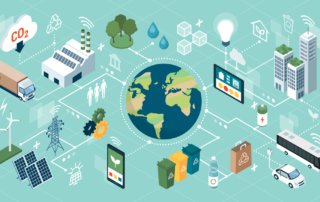Sustainability & Circularity in Your Supply Chain Planning
Learn how climate action relates to supply chain management. Achieving full-scale sustainability and circularity cannot happen without end-to-end alignment, hierarchical connectivity, integration of all parts of your supply chain, performance metrics, and business processes. And this alignment needs to be part of your existing supply chain before you can take it to the next level.








